Nigella Transformer
$4.49
Nigella Orientalis
- Seed Count 75
- Intriguing Texture
- Height 45 cm
- Annual
In stock
Description
An unusual twist on the classic cottage garden flower, Nigella Transformer adds intriguing texture with its uniquely shaped flowers and upright, seed pods.
Unlike the Nigella ‘Love in a Mist’ that produces watermelon-like pods, these curious seed pods have long tentacles and are pretty unusual looking.
Used fresh or dried the seed pods are a great filler in bouquets. Cut flower production just 12 to 16 weeks.
Growing to a height of 50 to 60cm, the plants have fine ferny green foliage and produce unusual tall yellow flowers.
This species is also a good choice for borders and mass plantings the plants tolerate some drought once well-established. Deadhead to prolong blooming.
Once you see Nigella in bloom, you will always recognise it by its unique mist of airy bracts and foliage.
It earns its common name of Love-in-a-Mist from the tangle of ferny, fennel like foliage that forms a mist around the flowers.
The airy foliage makes a nice complement to broader leaved plants and is a great filler for use with cut flowers in a vase.
Nigella is ridiculously easy to grow. A hardy annual, it can be sow early in spring or sown directly where it is to flower. Sowing to flowering takes just three months.
The flowers are well suited for traditional cottage garden settings or plant in a meadow where the soil is a little on the dry side and not too rich.
Once the petals drop, the blossoms transform into little fairy lanterns and the seed pods can be dried for winter decorations indoors.
Nigella seeds are traditionally used as a spice in Indian, Middle Eastern and North African cuisines, where their aromatic flavour and crunch make them particularly useful in bread and pastries.
They are also used in curries, soups and stews.
| Method: Sow direct or seedlings | Soil Temp: 10°C - 25°C |
| Cool Mountain: Nov - Dec | Germination: 7 - 14 Days |
| Arid: Aug - Jan | Position: Part sun |
| Temperate: Sep-Nov, Mar-Jun | Row Spacing: 30 cm |
| Sub Tropical: May - Oct | Planting Depth: 3 mm |
| Tropical: Jun - Aug | Harvest: 100 Days |
Climate and Growing Conditions
Temperature:
- Nigella prefers mild temperatures (15–25°C). It thrives in spring and autumn in warmer regions and can be grown in winter in cooler areas.
- Frost Tolerance:
Nigella is frost tolerant, making it ideal for temperate and cooler zones.
Heat Tolerance:
- In hotter regions, plant Nigella in partial shade to protect it from intense summer heat.
Soil Requirements
- Nigella is not fussy about soil but prefers well draining soil with moderate fertility.
Soil Type:
- Sandy loam or loamy soil is ideal.
pH:
- Slightly acidic to neutral (pH 6.0–7.0).
Drainage:
- Ensure the soil is well draining to prevent waterlogging, which can cause root rot.
Planting Nigella
How to Plant
Direct Sowing:
- Nigella prefers to be sown directly into the garden, as it does not transplant well due to its taproot.
Seed Spacing:
- Scatter seeds thinly and cover lightly with soil (about 3 mm deep).
- Space plants 30 cm apart.
Germination:
- Seeds typically germinate in 10–14 days at temperatures of 15–20°C.
Watering
- Nigella prefers moderate watering.
- Keep the soil moist but not waterlogged.
- Water deeply once a week, or more frequently during dry spells.
- Avoid overhead watering to prevent fungal diseases.
Sunlight
- Nigella thrives in full sun but can tolerate partial shade, especially in hotter regions.
- Aim for at least 4–6 hours of sunlight daily.
Fertilising
- Nigella does not require heavy feeding.
- Too much fertiliser can lead to excessive foliage growth at the expense of flowers.
- If needed, apply a balanced, slow release fertiliser at planting time or use a light application of compost.
Maintenance
Thinning:
- Thin seedlings to 30 cm apart to allow proper air circulation and prevent overcrowding.
Deadheading:
- Remove spent flowers to encourage continuous blooming.
- However, if you want to enjoy the ornamental seed pods, leave some flowers to mature.
Pests and Diseases:
- Nigella is relatively pest resistant.
- Watch out for aphids and treat them with insecticidal soap if necessary.
- Ensure good air circulation to prevent powdery mildew.
Harvesting and Seed Saving
Flowers:
- Nigella flowers are excellent for cutting and last well in vases.
Seed Pods:
- The seed pods are highly ornamental and can be dried for use in floral arrangements.
Seeds:
- To save seeds, allow the pods to dry on the plant.
- Once brown, harvest the pods and extract the seeds.
- Store seeds in a cool, dry place for next season.
Companion Planting
Nigella pairs well with other cottage garden plants such as:
Roses:
- Adds a soft, romantic touch.
Poppies:
- Complements Nigella’s delicate foliage.
Lavender:
- Creates a beautiful contrast in texture and colour.
Sweet Peas:
- Enhances the cottage garden aesthetic.
Common Problems and Solutions
Leggy Growth:
- Caused by insufficient light. Ensure plants receive adequate sunlight.
Poor Flowering:
- Overfertilization or overcrowding can reduce blooms. Thin plants and avoid excessive feeding.
Powdery Mildew:
- Improve air circulation and avoid overhead watering.
Postage Charge
Orders under $30 attract a $4.50 shipping charge. Orders $30 and above have free shipping.
Order Times
Seed orders are normally dispatched within three business days. You will receive an email when seeds are mailed out.
Postage Days
Seeds are mailed out Monday to Friday at 1pm. Except for the Friday of long weekends.
Postage Times
WA 2-3 Days: SA,NT 3-5 Days: NSW, ACT, QLD, VIC: 5-7 Days
Carrier
We use Australia Post Letter Postage for the majority of orders
Not only are our seeds packed in recycled paper envelopes, we keep the theme going when we post out website orders. To protect your seeds from moisture and the letter box munchers (snails), we use a very special plastic free material made from plants. They are then put into recycled mailing envelopes. Green all the way 💚🌿





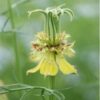
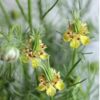

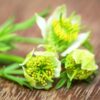

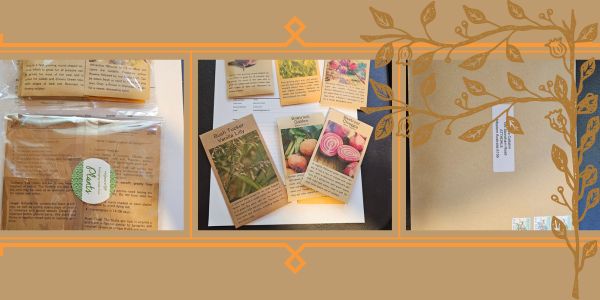
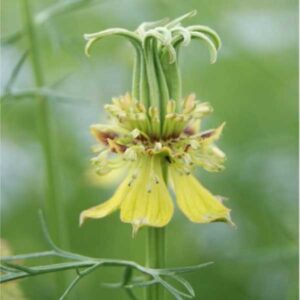
Reviews
There are no reviews yet